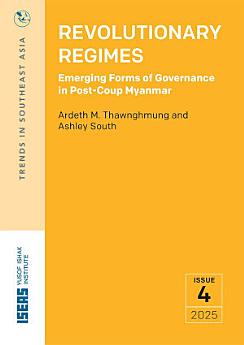Revolutionary Regimes: Emerging Forms of Governance in Post-Coup Myanmar
About this ebook
Experiments with new forms of governance have had varying degrees of success, with wide swathes of territory across the country coming under the control of groups opposed to the State Administration Council (SAC). Governance in non-SAC areas ranges from union-level claims, through regional, township and village tract arrangements. We identify five main types of governance in non-SAC areas:
1. Direct EAO governance—generally an (often benign) one-party state, in the name of a specific ethnic group.
2. Emergent (post-coup) state or area-based governance with more inclusion of civilians and local minorities, in a specific area.
3. Transitional governance arrangements, moving from model 1 to model 2.
4. Local resistance administrations in non-EAO areas—often aligned with the National Unity Government.
5. Indigenous local governance—at organic village/community-level, but also radical initiatives such as the Salween Peace Park in northern Karen State.
These developments have significant implications for democratic practices, national reconciliation and intercommunal relationships in Myanmar, serving as “bottom-up building blocks” for a new federalism aspired to by many ethnic minority (ethnic nationality) groups.
However, they remain vulnerable to junta attacks, including air-strikes, and are potentially subject to conflict due to overlapping territorial claims and the unsettled nature of territorial control by competing armed groups.
About the author
Ardeth Maung Thawnghmung is Professor of Political Science at the University of Massachusetts, Lowell.
Ashley South is Senior Research Fellow at Chiang Mai University at the Centre for Ethnic Studies and Development.








